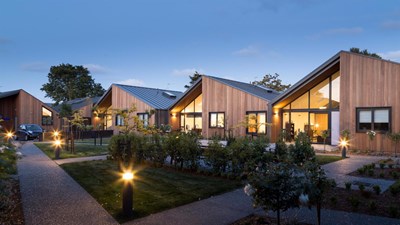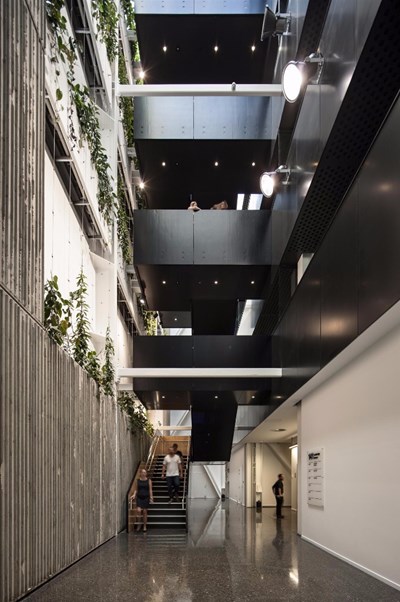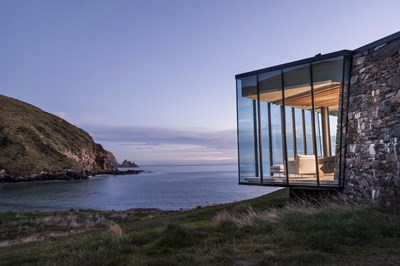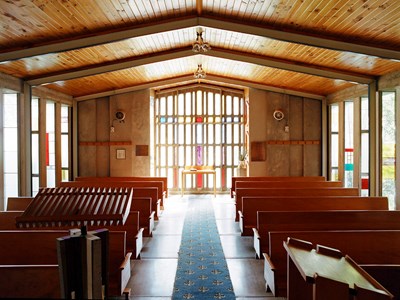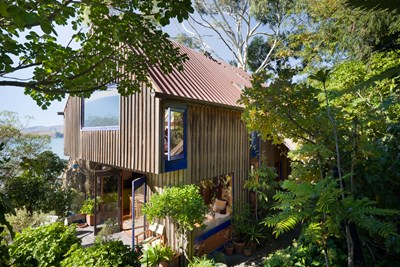From a “mega tower” on a five-metre by five-metre handkerchief of land through to important works of educational, public and commercial architecture, the recipients of the 2016 Canterbury Architecture Awards are a showcase of diverse, high quality buildings that have risen during the Christchurch rebuild.

Whakawhitinga Pahi by Architectus. Photo: Simon Devitt
The awards, announced at an event at Hagley Oval Pavilion, are part of the peer-reviewed awards programme conducted by the New Zealand Institute of Architects. The winning works set the standard for good architecture in the region.
Dennis Chippindale, this year’s awards convenor, led his jury through 40 shortlisted projects over eight “marathon” days of judging. “Five years on from the ’quakes, these awards provide us with a way to survey the profession – to see how we are responding to the challenges,” Chippindale said.
“Building from last year, we have again seen a record number of projects entered, and this year’s jury was lucky to see a wide range of design solutions – from major pieces of infrastructure right down to very small infill projects.”
Chippindale described the task of reinventing an irrevocably altered city as “monumental on many levels”. “Of all the challenges, dealing with drastic population shifts might prove to be one of the most significant. Christchurch needs to be an attractive urban environment – an environment that brings people back to stay.”
Impressed with the overall quality of work, Chippindale also said now is the time for greater aspiration to be applied to the form of the developing city.
“Our largely vacated central city is now being reborn with hope and ambition. In 2016, Christchurch is slowly creating a growing framework of basic infrastructure buildings. However, we are at an important juncture – it is time now to adjust, to heighten aspirations, to move beyond some of the overtly conservative design thinking of the initial recovery years, and to consider ways to create exceptional urban environments, of whatever scale, in which people can live, work and play.”
Award winners
The four commercial architecture projects awarded this year include a boutique office for a prominent local architecture practice and significant retail, office and rugby developments. Sheppard and Rout Architect’s office blends a carefully composed addition with a grand old, two-storied villa. “This project exemplifies a well-thought-out approach to rebuilding Christchurch,” the jury said.
Jasmax’s Lane Neave building is also a commercial winner.
“In a city that will see many concrete, steel and glass buildings emerge in the post-earthquake cityscape, the elegance and restraint of Lane Neave marks it out as something special,” the jury said.
Knox Plaza, a retail and office building, is “elegantly proportioned”, the jury said. It is also set apart by the way it defers to Knox Church. The building’s curves and angles, rich timber detailing, and the generous provision of sheltered outdoors public space were also praised.
The pursuit of the oval ball provides much joy in the Canterbury region, so it is perhaps fitting that the jury found the Offices and High Performance Facility, designed by Athfield Architects for the Canterbury Rugby Football Union and the Crusaders Super 16 franchise, to its liking.
“Out of very little, the architects have intelligently and sensitively trained this building to be efficient, proud and joyful,” the jury said.
Education
Athfield Architects received four awards this year. In the education category, the Winchester Precinct – a key part of St Margaret’s College rebuild programme – “blends traditional pedagogical design with up-to-date thinking,” the jury said.
The other education winner, Cholmondeley Children's Centre by RMBH Architects, is a new purpose-built facility that replaces a historic villa. “Metaphorically and literally, this is a place of shelter and protection,” the jury said.
Heritage
In a city that has lost so many buildings, Chippindale said it was “very satisfying” to make heritage awards to Dalman Architecture’s Acland House – ‘Old House’ and Wilkie + Bruce’s replacement dining hall and kitchen for College House.
At Acland House, the ground floor is now principally a dining room for 150 boarders. “Under the elaborate plastered ornamentation and moulded timber door and window frames, an unexpected but welcome stylishness is brought to the daily rituals of high-school boarding,” the jury said.
The College House dining hall, which blends salvaged elements with a new, lightweight structure, “successfully recreates the visual and emotive experience of a grand dining hall”, the jury said.
Housing
Chippindale said the jury was “struck by the quality of residential work” it encountered.
“We took great delight in modest, but very well-thought-through projects that are, essentially, about putting people’s homes back together. This type of work has become a large part of local architects’ daily work. They are creating many buildings that express a positive outlook and sensitive contemplation of the past.”
Among the eight housing winners (full list below) was Homebush by Athfield Architects, a replacement for the historic, original 1851 homestead home of Canterbury pioneers William and John Deans, which was destroyed in the 7.1-magnitude earthquake of September 4, 2010.
The new industrial and modern looking new home is integrated with salvaged parts of the original homestead. “In its lush pastoral setting, with its intuitive use of unlikely forms and raw materials, this romantic home delights the soul,” the jury said.
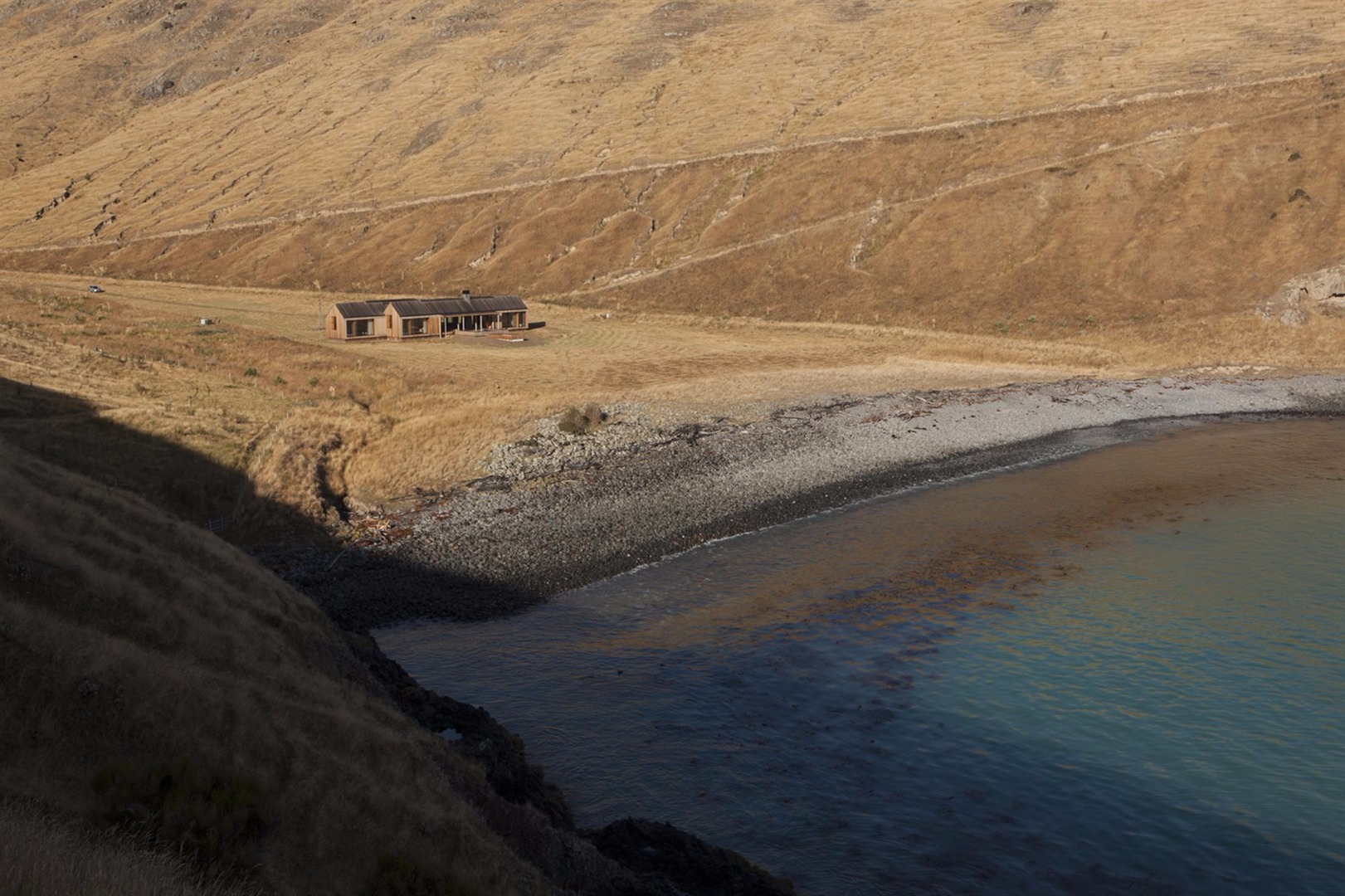 Scrubby Bay by Patterson Associates. Photo by Simon Devitt
Scrubby Bay by Patterson Associates. Photo by Simon Devitt
Not all winning residential projects are earthquake rebuilds. Two houses by Patterson Associates, ‘Scrubby Bay’ and ‘Seascape’, provide luxury accommodation within the isolated Banks Peninsula bays that are part of the Annandale sheep and cattle farm. “Meticulously designed”, Scrubby Bay is a “rich, sensory experience”, the jury said, while Seascape is a “wonderful retreat…a modern interpretation of a cottage, albeit one that is tucked into the rock escarpment of a secluded bay. This small house is an exceptional example of design pared back to key functions”.
Two multi-unit projects, Mary Potter Apartments and 26 Salisbury Street Townhouses, both designed by Warren and Mahoney Architects, received awards this year. The Salisbury townhouses are among the first Christchurch buildings to use cross-laminated timber panel technology. “Sophisticated exterior and interior detailing make these townhouses an outstanding exemplar for medium-density central city living,” the jury said.
Set around an intimate, shared courtyard, the Mary Potter Apartments “set a high bar for retirement living as a community,” the jury said.
Public architecture
Whakawhitinga Pahi, Christchurch's new public transport hub is a “sea change in the experience of commuter bus transport”, the jury said. The Architectus project carefully balances the “functional aspects needed to cope with high traffic on a site, bordered on three sides by roads, with an airy, light filled hall”.
The Sumner Surf Lifesaving Club Pavilion is the result of a concerted community fundraising effort. Few architects get the chance to build on a beach foreshore; when the opportunity arose, Wilson & Hill Architects created a “coastal landmark”, with “sloping walls, angled soffits and curved roofs designed to deliberately express the building forms as waves”, the jury said.
In Ashburton, Warren and Mahoney’s EA Networks Centre, a popular sporting facility for Mid-Canterbury, could prove a catalyst for the development of a wider recreation precinct. The jury thought it could become an iconic building for the region, and praised the “heroic canopy and timber supporting structure” that clearly defines this large complex.
Small projects
“In Christchurch, much of the city’s character will be dependent on the quality and inventiveness of infill buildings,” Chippindale said.
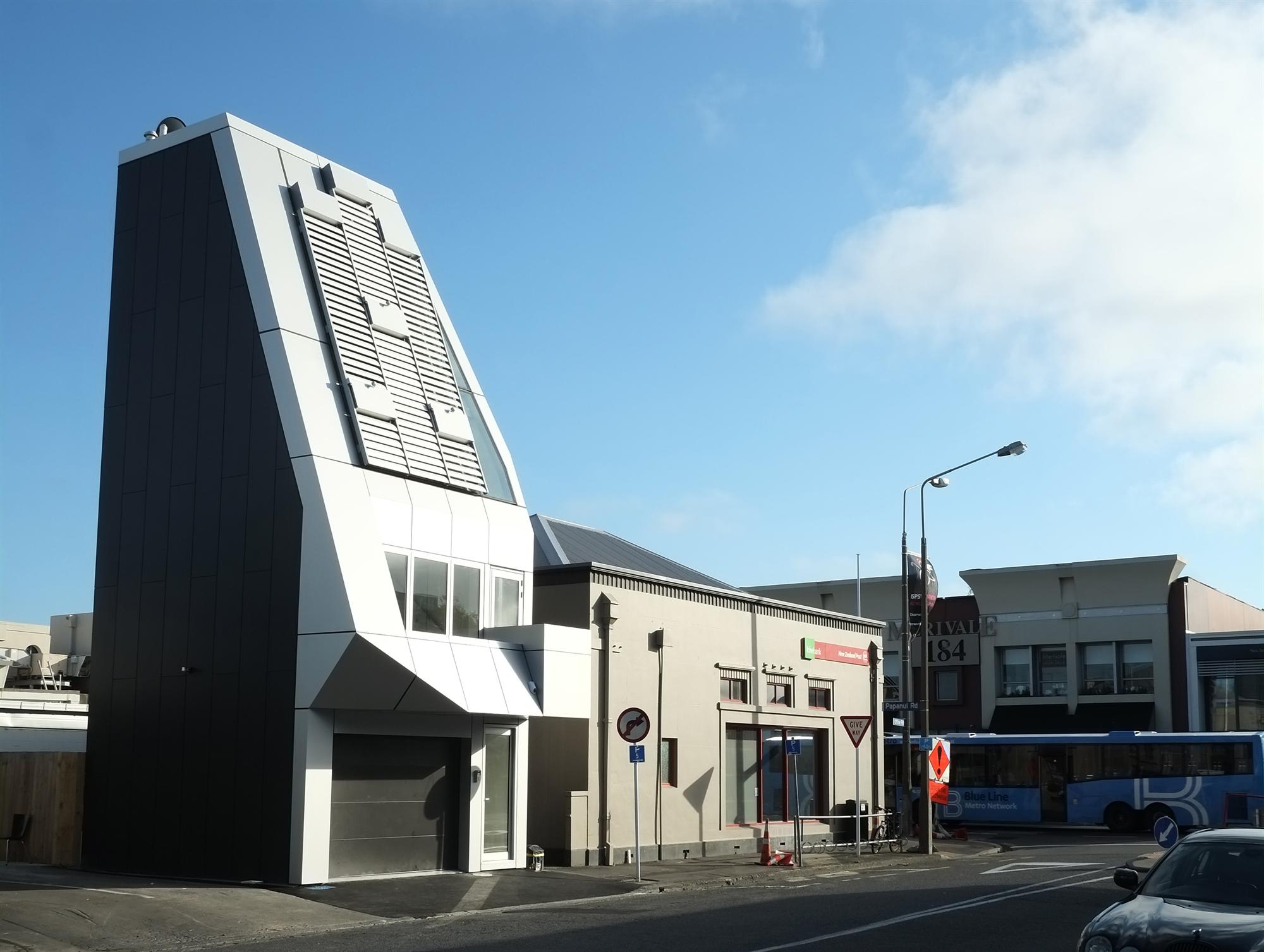
MegaTower by Thom Craig Architects. Photo: Stephen Goodenough
Thom Craig’s ‘Mega Tower’, which is sited on a tiny 5 x 5 metre site within the Merivale shopping precinct, has character in abundance. “This playful, thought provoking and engaging piece of architecture clearly has a higher calling,” the jury said.
A compact inner-city ‘Bachelor Pad’ is another small project winner. The jury praised the building’s “clever planning” and flexible spaces. “The house is a good example of how a small footprint can be made to feel much larger through the clarity of relationships between inside and out.”
229 Lichfield, a small office project by Young Architects, is a “reinvented earthquake-damaged building that speaks of resilience and survival”, the jury said. “This is a good example of what can be achieved with a tight budget.”
Olive Grove, Patterson Associates’ third award-winning project, is a shelter that comprises a multi purposed room, changing rooms and north-facing terrace overlooking a swimming pool and tennis court. “The robust material palette of concrete, stone and timber are elevated by great design and excellent craftsmanship,”” said the jury.
St Bede's College Durham Dormitory by Herriot + Melhuish: Architecture (HMA), uses over-scaled timber bunk bed units arranged in blocks of four to divide large dorm rooms without affecting the heritage elements of this landmark building. “The units themselves are solid and muscular – suited to years of robust use – and create a welcoming first home-away-from-home for young St Bede’s boarders,” the jury said.
Enduring awards
This year, two Enduring Architecture Awards (which recognise the continuing value of buildings more than 25 years old) were conferred. St Andrew's Church (1960), designed by Allan Mitchener Architect, “is a hidden gem”, the jury said. “Quietly set back from the main road in the tiny Banks Peninsula village of Le Bons Bay, this unassuming form belies the craftsmanship to be found within.
The Rout House, by architect Jonty Rout (1979), is a “modestly sized yet skilfully crafted house”, the jury said. It was consciously designed by the architect as a daily retreat from the city, and “speaks of the high value Rout placed on spaces for living and on architecture’s capacity to provide us with ease, comfort and delight”, the jury said.
All winners of 2106 Canterbury Architecture Awards are listed below. These projects are eligible for shortlisting in the New Zealand Architecture Awards, which will be decided later in the year, and announced in November.







